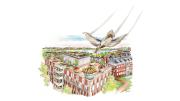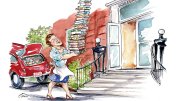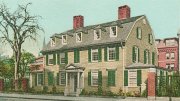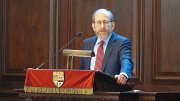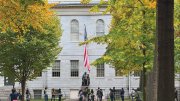1926
A Crimson poll of students and faculty members on their attitudes toward Prohibition finds that 29 percent favor repeal, a nearly equal number support rigorous enforcement, and 43 percent favor modification of the law banning the possession and consumption of alcohol.
1941
The May 5 issue of Life has a photo essay on “America’s oldest, the New World’s greatest, and the world’s richest university.” Harvard’s gravest concern, Life reports, “is that freedom to teach and discover the truth shall not die throughout the world as it has on the European continent. To this end it is meeting the challenge of national defense with the full resources of its brains and laboratories.”
The Lampoon’s metal ibis has been kidnapped by “Crimson Stalwarts” and displayed in unseemly venues like the Old Howard, the famous burlesque house. A Crimson staffer has been carried off to Nantasket in revenge.
1946
The Victory Meeting of the Associated Harvard Clubs is planned as an exclusively male event, due to limited accommodations, but Dr. Gemma Vivaldi Barzilai, SPH ’29, is invited by mistake. The AHC allows her to attend, making her the “lone lady” among 1,800 Harvard men.
1961
The Bulletin’s Undergraduate columnist reports “mild stupefaction” at “the idea of a coeducational tenth House, a thought some say was perpetrated at Radcliffe.”
1981
Both current and future faculty members and scholars—paleontologist Stephen Jay Gould, child psychiatrist Robert Coles, psychologist Howard Gardner, scientist John Holdren, literary critic Henry Louis Gates Jr., and Mayanist Ian Graham—are among those who receive the first “no strings attached” grants from the MacArthur Foundation of Chicago. Gould describes it as “a scholar’s dream.”
1996
An “ornery” mallard builds her nest in a planter in the Quincy House rooftop garden, and is found to be guarding seven eggs. House and Harvard administrators take the family under their wings until, a few days after the ducklings hatch, the little flock is released along a riverbank out in Concord. House master Michael Shinagel observes: “It just shows to what lengths a determined mother will go to get her children into Harvard.”
